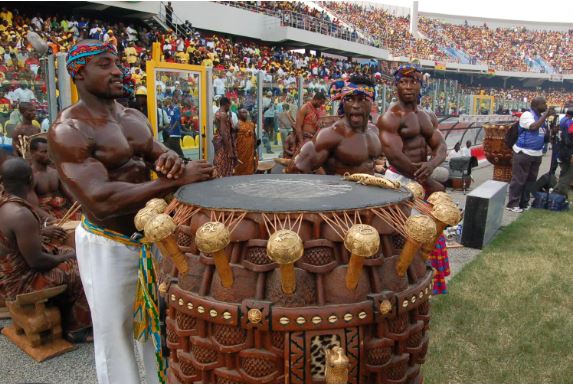This post discusses the regions of Ghana, the current regions and its capital and also the previous regional configuration of Ghana.
REGIONS OF GHANA
The Regions of Ghana constitute the first level of subnational government administration within the Republic of Ghana. As of 2020, there are currently sixteen regions, which are further divided for administrative purposes into 260 local metropolitan, municipal and district assemblies (or MMDA’s).
The former ten regional boundaries were officially established in 1987, when the Upper West Region was inaugurated as the state’s newest administrative region. Although the official inauguration was in 1987, the Upper West Region had already functioned as an administrative unit since the break-up of the Upper Region in December 1982, prior to the 1984 national census. The referendum on the creation of six new regions was held on December 27, 2018 – all proposed new regions were approved.
CURRENT REGIONS
| REGION | CAPITAL |
| AHAFO | GOASO |
| ASHANTI | KUMASI |
| BONO EAST | TECHIMAN |
| BRONG AHAFO | SUNYANI |
| CENTRAL | CAPE COAST |
| EASTERN | KOFORIDUA |
| GREATER ACCRA | ACCARA |
| NORTH EAST | NALERIGU |
| NORTHERN | TAMALE |
| OTI | DAMBAI |
| SAVANNAH | DAMONGO |
| UPPER EAST | BOLGATANGA |
| UPPER WEST | WA |
| WESTERN | SEKONDI-TAKORADI |
| WESTERN NORTH | SEFWI WIASO |
| VOLTA | HO |
PREVIOUS REGIONAL CONFIGURATION:
Independence – 6 March 1957
At Independence in March 1957, the Northern Territories, Trans-Volta Togoland and the Gold Coast came together to form Ghana. There were initially five regions. The Trans-Volta Togoland was combined with part of the Eastern Region and Northern Territories to form the Volta Region.
Post-independence and First republic
On 4 April 1959, the Ashanti Region was officially split into the Ashanti and Brong-Ahafo Regions. This followed the Brong Ahafo Region Act No. 18 of 1959. This was in line with what the Brong Kyempem movement had been campaigning for, which is the recognition of the Bono people as a separate ethnic group from the Ashantis with their own region.
On the day Ghana became a republic, 1 July 1960, the Northern Region got split into the Northern and Upper regions raising the number of regions to seven.
PNDC era
The Provisional National Defence Council which was the military government in power between 31 December 1981 and January 1993 promulgated the Greater Accra Law (PNDCL 26) of 23 July 1982 which created the Greater Accra Region. This made the Accra Capital District, where the national capital, was Accra and the Ada Local Council, both areas within the Eastern Region parts of the new Greater Accra Region. In the following year 1983, the Upper Region was divided into the Upper East Region and Upper West Regions, bringing the total number of regions to ten.

